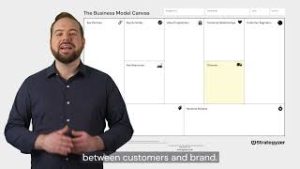Startup Secrets: Go to Market Strategy Part II: Tactics
In this session learn the tactical components of a great GTM plan. In particular, we’ll cover the critical elements of a marketing and sales cycle. Learn the basics of inbound marketing, outbound marketing, sales funnel design and optimization, and lastly, the importance of customer engagement and validation.
A quick glance beyond this on Go to Market Strategy
In the ever-evolving world of startups, the success of your business depends not only on having a great product or service but also on your ability to effectively reach and engage your target audience. In part two of our “Go to Market” series, we’ll explore the tactics that startups can employ to take their offerings to market successfully. From understanding customer acquisition to leveraging the power of digital marketing, we’ll uncover the essential tactics for startup success.
1. Customer Acquisition Strategies
Understanding your target customers and knowing where to find them is a critical aspect of a startup’s success. Here are some customer acquisition tactics to consider:
- Content Marketing: Create valuable and informative content that resonates with your target audience. Blog posts, videos, podcasts, and infographics can help you establish authority in your niche and attract potential customers.
- Social Media Engagement: Actively engage with your audience on social media platforms. Share relevant content, respond to comments, and run targeted ad campaigns to increase brand awareness and drive traffic.
- Influencer Marketing: Collaborate with influencers in your industry to tap into their followers and gain credibility. Influencers can help you reach a wider and more engaged audience.
- Referral Programs: Encourage your existing customers to refer others to your business through referral programs. Offering incentives can motivate customers to spread the word.
2. Email Marketing
Email marketing is a powerful tool for startups to nurture leads, communicate with customers, and drive sales. Some tactics for effective email marketing include:
- Segmentation: Divide your email list into segments based on customer behavior and demographics. This allows you to send highly targeted and relevant content to specific groups.
- Personalization: Personalize your emails with the recipient’s name, product recommendations, and content tailored to their interests and preferences.
- Automated Campaigns: Use marketing automation tools to send automated email campaigns, such as welcome emails, abandoned cart reminders, and post-purchase follow-ups.
- A/B Testing: Continuously test different elements of your emails, including subject lines, content, and call-to-action buttons, to optimize their effectiveness.
3. Search Engine Optimization (SEO)
SEO is essential for startups looking to boost their online visibility. Tactics for effective SEO include:
- Keyword Research: Identify the keywords and phrases that your target audience is searching for. Use tools like Google Keyword Planner to find relevant keywords.
- On-Page Optimization: Optimize your website’s content, meta tags, and images for the chosen keywords. Ensure your site loads quickly and is mobile-friendly.
- Quality Content: Create high-quality, informative, and engaging content that answers your audience’s questions and provides value.
- Link Building: Build a network of high-quality backlinks from reputable websites to improve your site’s authority and rankings.
4. Paid Advertising
Paid advertising is a quick way to drive targeted traffic to your website. Tactics for successful paid advertising campaigns include:
- Pay-Per-Click (PPC): Use platforms like Google Ads and social media advertising to pay for ads that appear when users search for relevant keywords or fit your target demographics.
- Retargeting: Implement retargeting campaigns to re-engage users who have visited your website but didn’t convert. Show them relevant ads to encourage a return visit.
- Budget Allocation: Carefully allocate your advertising budget, continuously monitor performance, and adjust your strategy based on what works best.
- Ad Creatives: Create compelling ad creatives with attention-grabbing headlines, clear calls to action, and eye-catching visuals.
5. Social Media Advertising
Social media platforms are fertile ground for startups to connect with their audience. Tactics for social media advertising include:
- Platform Selection: Choose the social media platforms that align with your target audience’s preferences. For example, Facebook, Instagram, and Pinterest may be ideal for visual products, while LinkedIn is better for B2B services.
- Ad Formats: Leverage various ad formats, including image ads, video ads, carousel ads, and story ads, to create engaging content.
- Audience Targeting: Utilize detailed audience targeting options to reach specific demographics, interests, and behaviors.
- Ad Testing: Experiment with different ad types and messaging to determine which resonates best with your audience.
Conclusion
The tactics discussed in part two of our “Go to Market” series provide a roadmap for startups looking to make their mark in the business world. From customer acquisition strategies and email marketing to SEO, paid advertising, and social media advertising, these tactics can be tailored to your specific business goals and target audience. By carefully planning and executing these tactics, startups can establish a strong online presence, attract customers, and pave the way for sustainable growth and success in the competitive startup landscape.



















